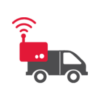Keep Your Business Secure and Effecient
You trust your drivers and they work hard for your business, but some months your fuel costs seem high and you’re not sure why. Maybe it’s difficult to analyze which vehicles cost your business the most. Or perhaps you have frequent driver turnover and corporate credit cards disappear with previous employees.
The cost of fuel, managing a fuel and vehicle budget, and dealing with employees are all common challenges. Business cards are designed to help.
How Business Cards Help Your Bottom Line
With a business card, automatic purchase controls limit the purchases drivers can make. You determine these controls and decide what works best for your business. For instance, you could allow drivers to purchase fuel and fluids — such as coolant or oil — at a fuel station, but not candy or cigarettes. Or limit fuel purchases by dollar amount, number of gallons, day of the week and many others.
These controls are possible because business cards run on an exclusive, custom-designed payment network. Because it’s custom, the cards work only at fuel and service stations. You pre-determine the types of products drivers can buy and detailed purchase data is automatically captured and sent to you — including who bought what and for which vehicle. You no longer need paper receipts from drivers.
Business cards also require two-part authorization, which means drivers must enter a Driver ID number and a current odometer reading before every purchase. If a card is lost or stolen, it can’t be used without entering a Driver ID number. And if a driver is no longer an employee, simply deactivate their Driver ID number and they instantly lose access to all business cards.
Alternative Fuel Payment Options: What Do They Offer?
Your fuel and vehicle budget is key to your business; it’s important to review all options when choosing the best payment method.
Credit and debit cards use generic payment networks that process data for dozens of different brands. They can’t offer much control over purchases before they are made, and you receive only general information about purchases after they are made — such as where and when a driver paid. You still need paper receipts from drivers to track costs.
Reimbursement is popular for its simplicity: drivers pay for fuel and are reimbursed when they turn in paper receipts. However, this means you lose the opportunity to gather crucial data about your vehicles, including odometer readings and items purchased. This method also relies heavily on a paper trail, and requires additional administrative time.
Protect Your Company With a Business Card
Payment methods differ significantly in the kind of purchase detail they provide, their ability to help you track costs, and the fraud protection they offer. Choosing the right payment option can help your business succeed.
By using automatic controls and two-part authorization, business cards are designed to protect your business on multiple levels. They also allow you to track and analyze vehicle and driver activity in real-time, keeping your business — and budget — as efficient as possible.


